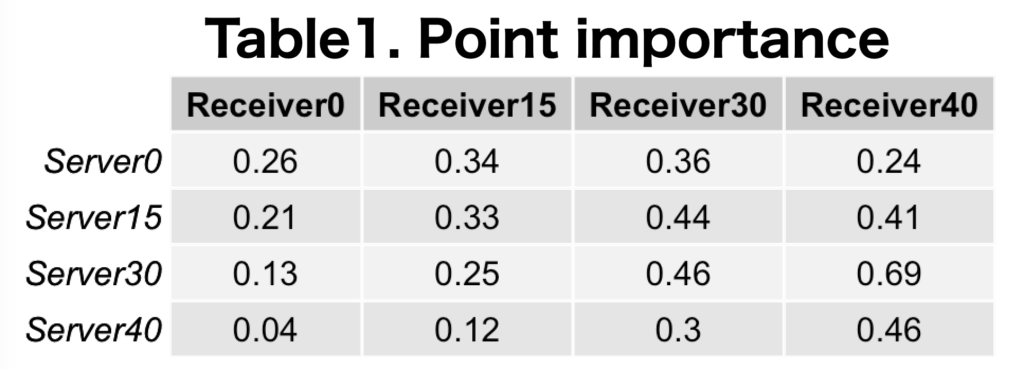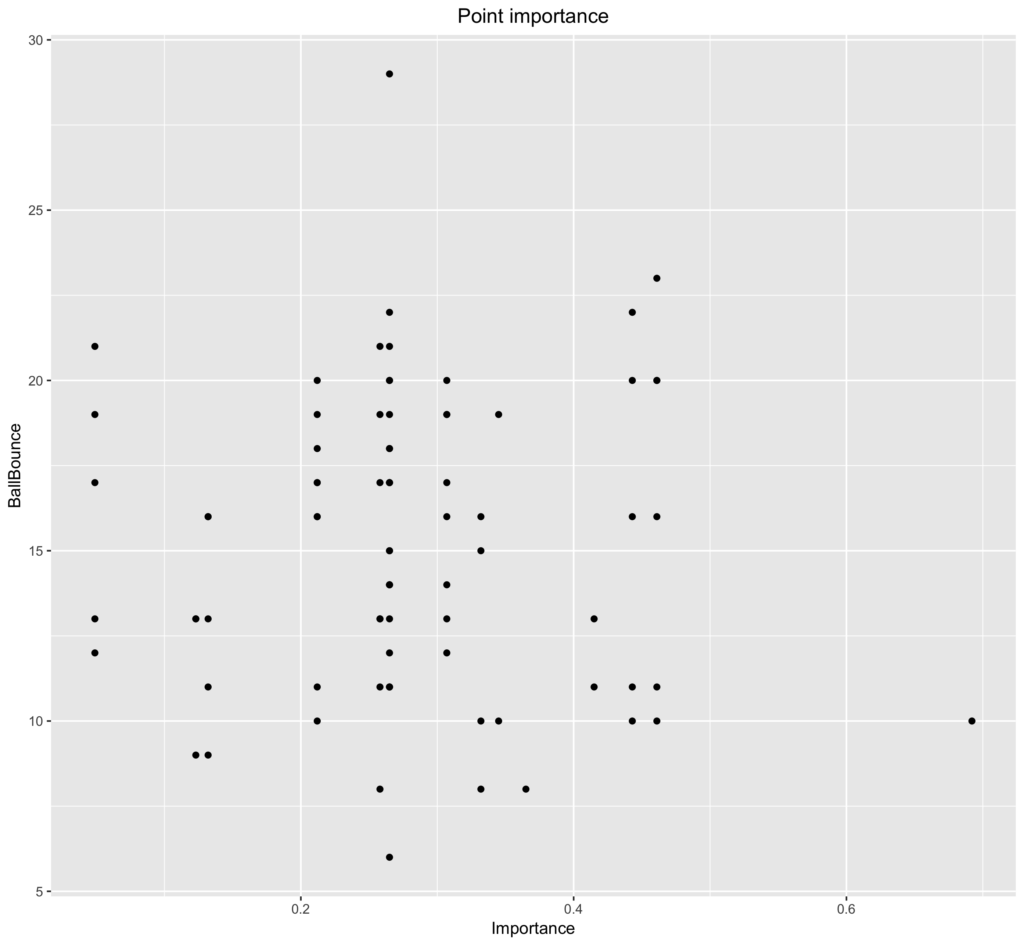Today’s topic is Djokovic’s ball bounce.
Time interval between points
Time interval between points is important time to consider and decide next point’s strategy. How do you use this time when you play tennis? For example, you might consider “Where should I aim to for the next serve?” or “Should I come to the net after my serve?”. Recently, ATP tour, male professional tournaments, set a new rule: “Shot clock”, which restricts point interval 25 seconds. If the player don’t follow this rule, the player receive a warning which relates to the point loss as delay of game.
Effects of the rule revision
This rule revision may affect some players who want to take time to think about next point’s strategy. Novak Djokovic, the world No.1 ranked male tennis player, is famous for his many ball bounce before the serve.
Point importance
Point importance is a concept that indicate how the point is important to get the game. It is mathematically calculated. In details, please refer to the paper.
G. Peter O’Donoghue & Emily Brown (2008) The Importance of Service in Grand Slam Singles Tennis, International Journal of Performance Analysis in Sport, 8:3, 70-78.
In this post, I assume that % serve won 60%. Here, point importance for each score is as follows (table 1)

The most important point is 30-40 and the least important point is 40-0. This is because due to the above 50 % won serve, the servers are likely to can hold his/her service game to get even
(i.e. Deuce). When the score is 40-0, the servers can hold his/her service game unless they loss 6 consecutive points (it’s very rare: .4^6 = .001). Therefore, the point importance itself in 40-0 is low.
In this post, I’d like to examine the relationships between ball bounce and some indexes.
Measurement of ball bounce
Target of this post is the match of Novak Djokovic and Rafael Nadal in Wimbledon 2018. This tournament was held just before the rule revision. I visually observed and measured the number of ball bounce. However, I excluded 86 points (51%) because of camera angles.
Result
15 ball bounce
Djokovic bounces the ball 15.15 (± 4.32) times (min: 6, max: 29). Although there is no strict classification for
numerousness of ball bounce, some people mention 10 times of ball bounce is many. Djokovic’s ball bounce is considered relatively many.
https://www.thesun.co.uk/sport/6706095/why-do-tennis-players-bounce-ball-before-serving-wimbledon/
Point importace

There is no significant correlation between point importance and the number of ball bounce.
Relation to other indexes
Serve speed

There is no significant correlation between serve speed and the number of ball bounce.
Serve accuracy

It was unexpected that ball bounce of in serve was less than that of fault serve. I can’t suggest many ball bounce has an effect of maintaining focus on serve accuracy from this result.
Epilogue
I examined the relationships between ball bounce and some indexes. Unfortunately, the results weren’t consistent with my prediction. There are some points to be improved for this analysis. For example, I was not able to observe all ball bounces from the broadcast video. However, I’d like to keep analyzing interesting topics related to tennis. Personally, I’m interested in bounce tempo could change affected by fatigue or pressure.
See you next time!
